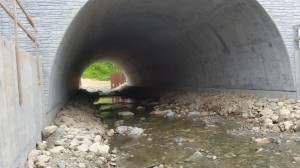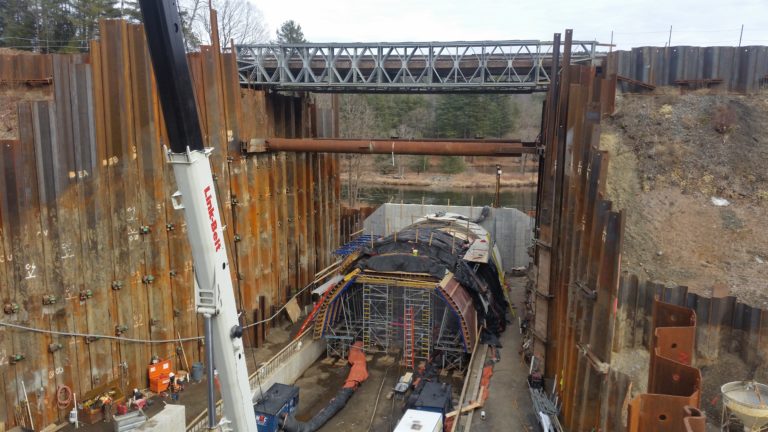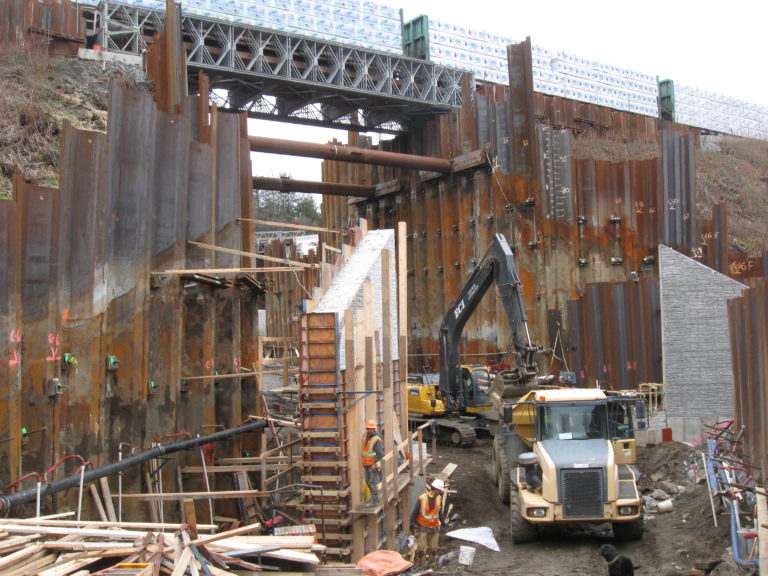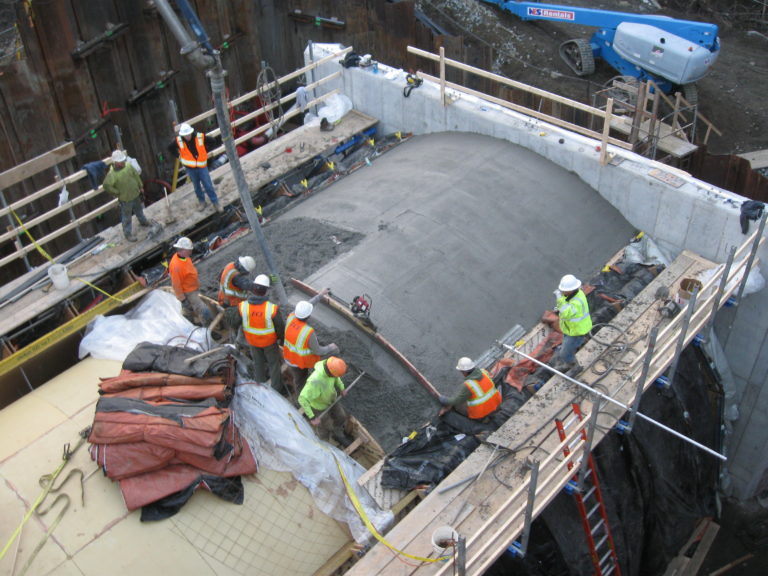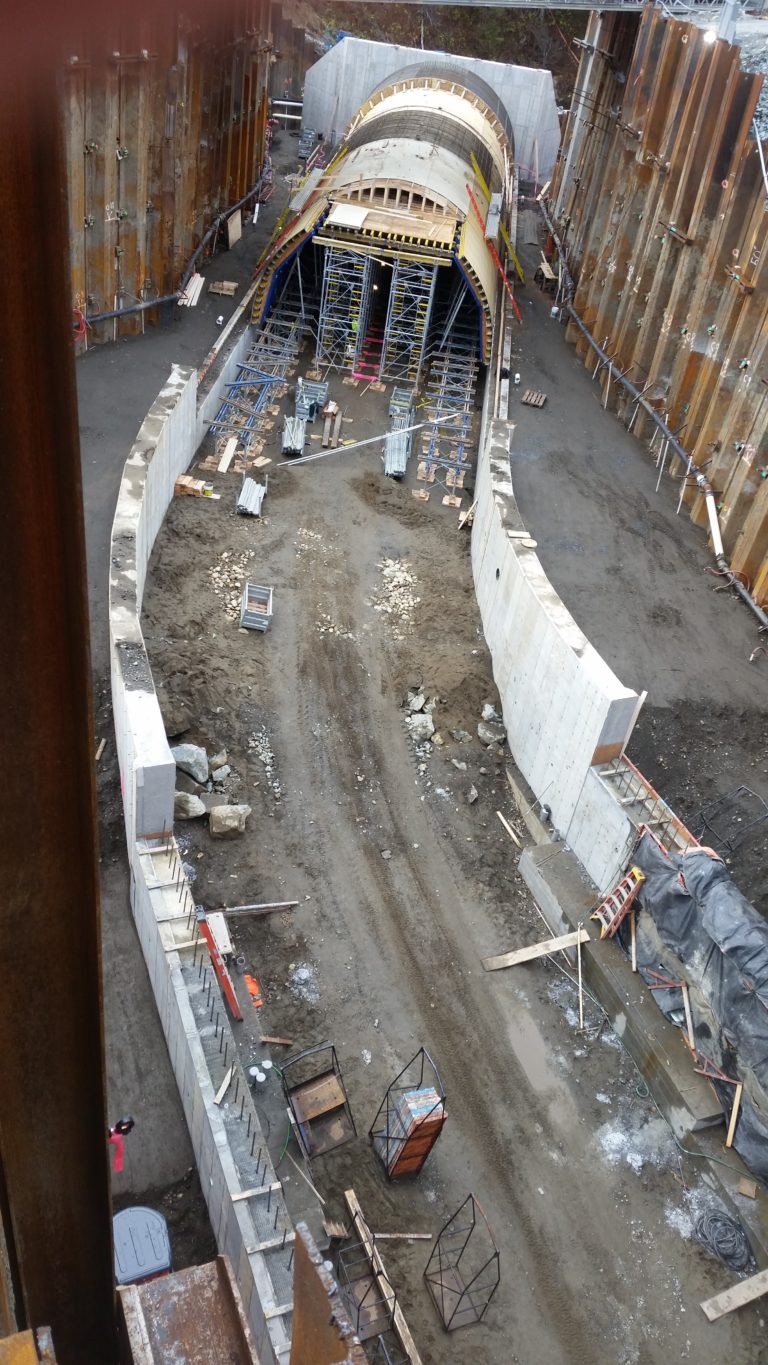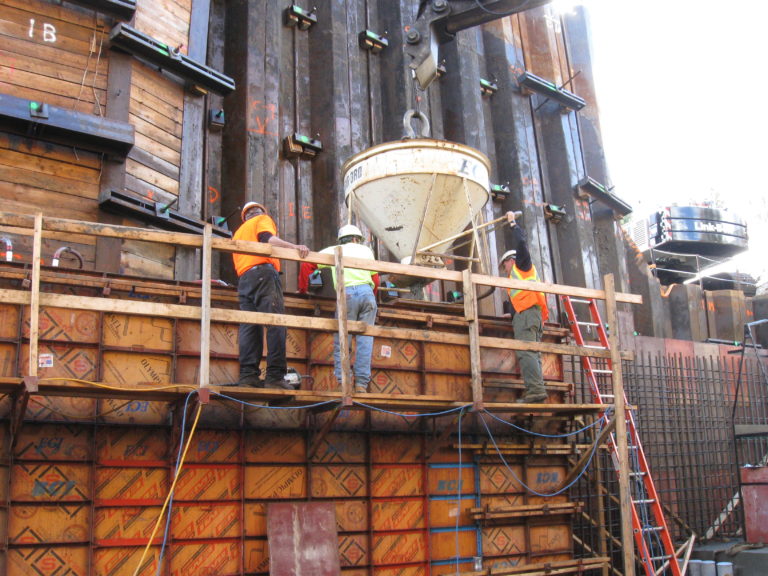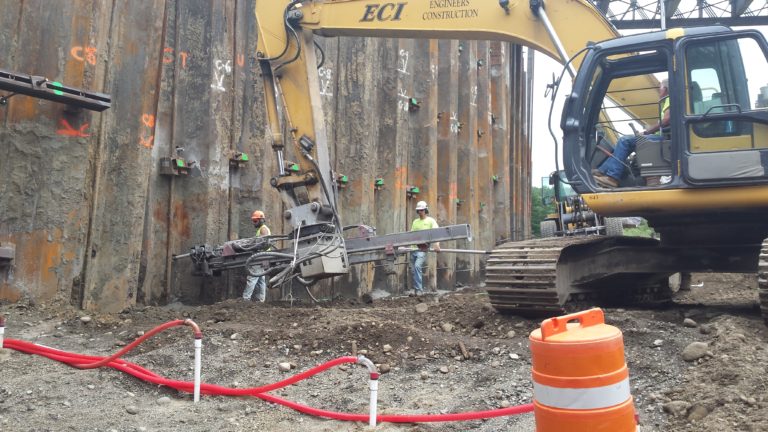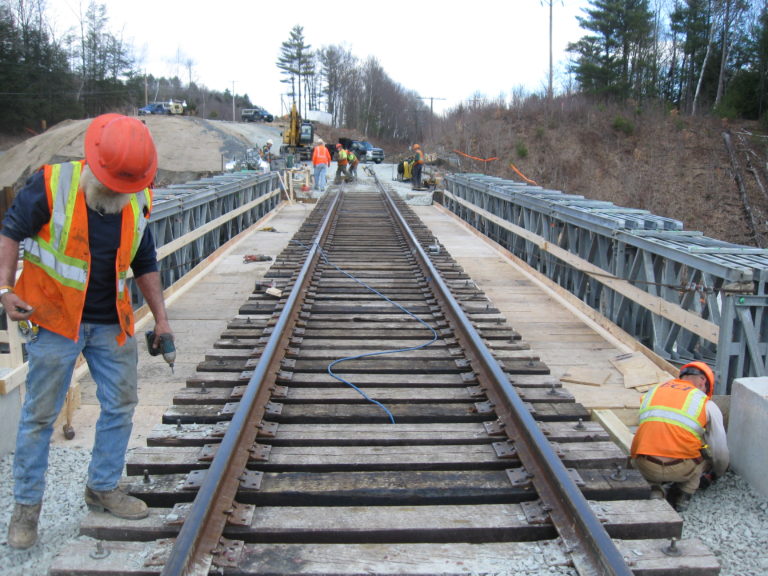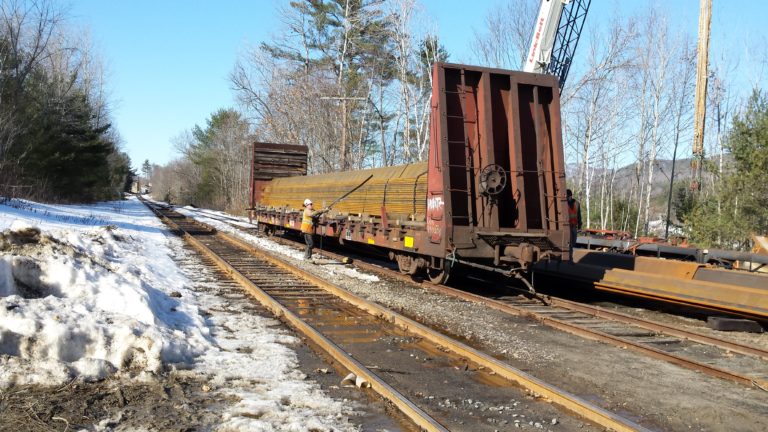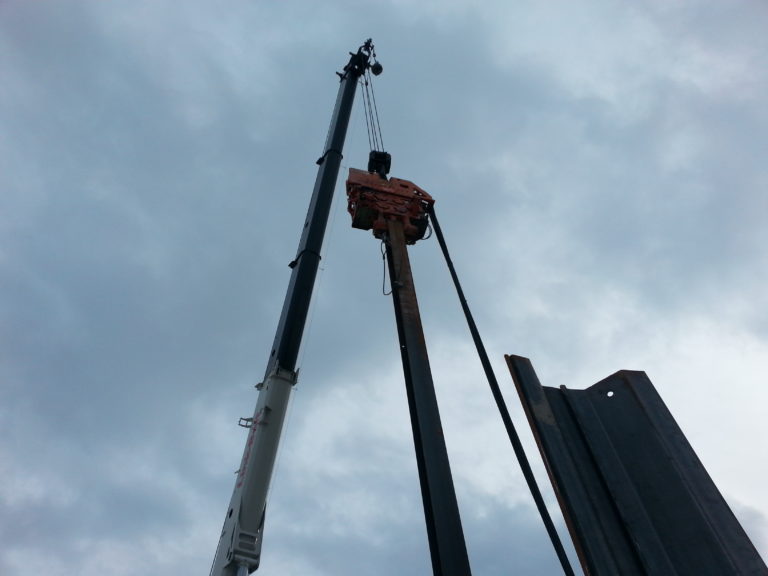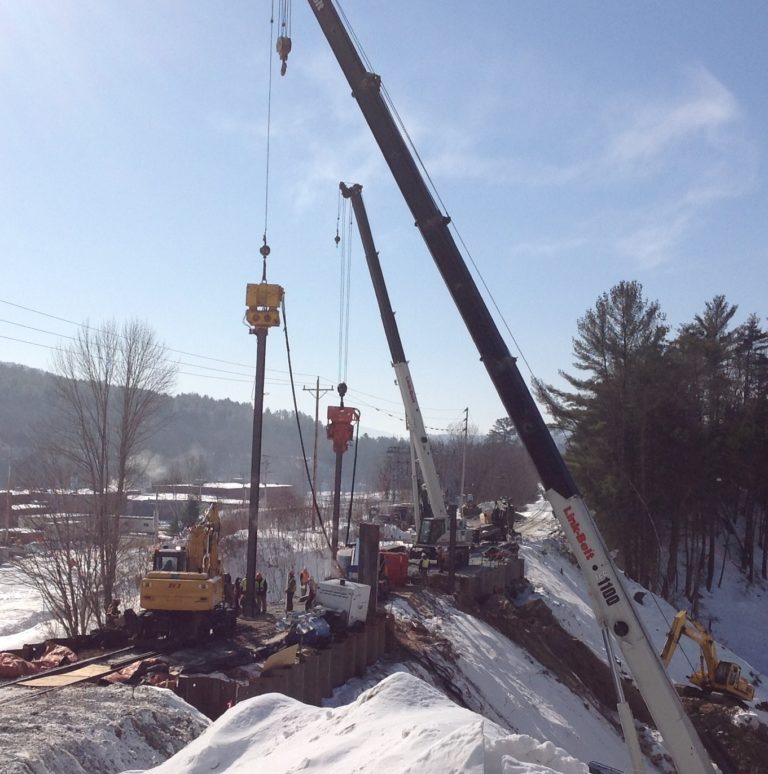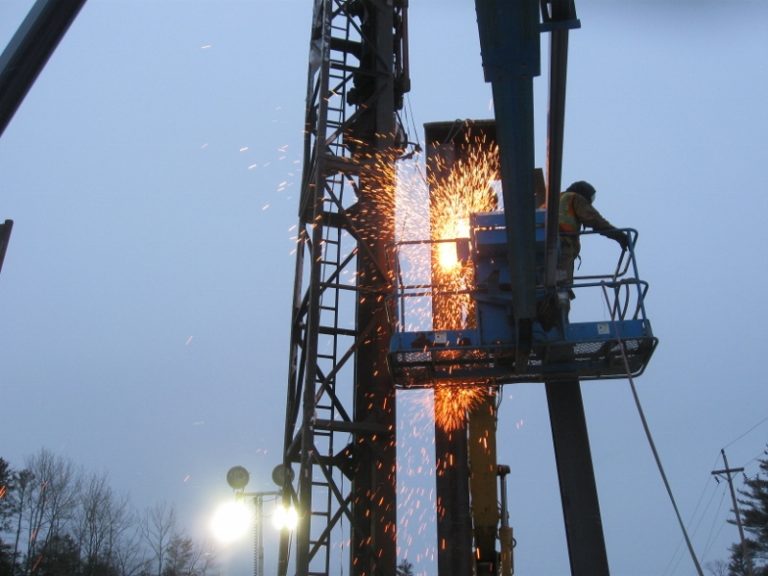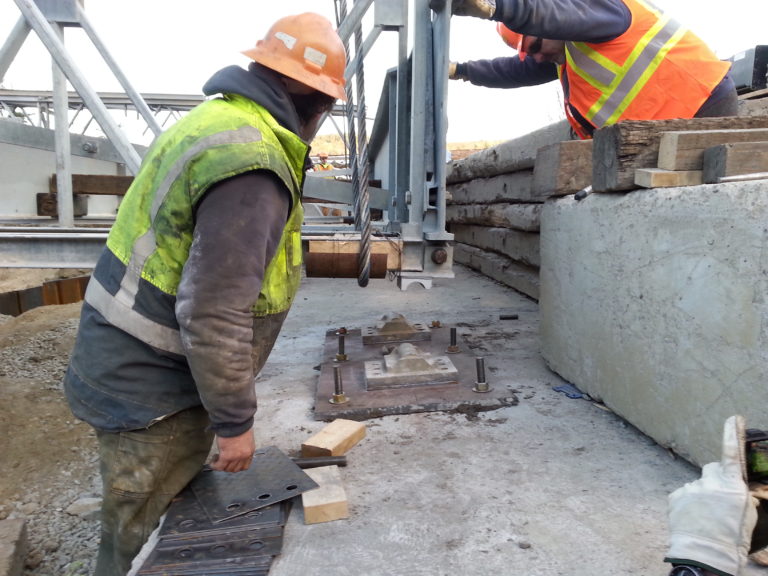
Blog
ECI Nears Completion of $15.248M Design-Build Ryegate Culvert
The waters of the Manchester Brook have been flowing through the new 32-ft-wide Ryegate Culvert since May. And just recently, the temporary bridges for US Route 5 and the Washington County Railroad were removed and traffic was back to the final highway and railroad alignments. The new 32-ft-wide concrete arch, with lengths of 144 and 128 feet and a 50-ft-long open area between them, replaces an old undersized collapsing culvert. The work was completed over a period of nearly 2 years and without closing US Route 5 and with only limited rail shutdowns during non-traffic periods.
ECI self-performed nearly every aspect of this complex heavy civil project including earthwork, foundation and sheet piling, tiebacks and soil nails, temporary bridges, concrete, rail work, paving, horizontal directional drilling, quality control program, and project management.
This project also includes many firsts for ECI:
- ECI’s first design-build (D-B) transportation project – Our client was the Vermont Agency of Transportation. ECI was the first Vermont contractor to serve as a lead for a VTrans D-B project. And, Ryegate was just the 6th D-B project for VTrans.
- ECI’s first and second temporary bridge launches, both of which used the crane-assist method – The 80-ft-long highway bridge was unique for its 7% grade and on a skewed alignment to the excavation which posed challenges during installation and relative to maintenance. The 70-ft-long railroad bridge was also unique because of the limited access to the work site from the rail. ECI deployed the pre-assembled railroad bridge using rail car “trucks” which were incorporated into the launch.
- ECI’s deepest excavation – And, likely the deepest braced excavation in soil ever attempted in Vermont with a final depth of 70 feet below the railroad and 65 feet below US Route 5. The excavation was supported by interlocking steel sheet piles and supplemented with soldier piles and wood lagging in certain areas. ECI installed over 700 tiebacks and soil nails for bracing.
- ECI’s most complex concrete project – The culvert project involved over 2,400 cy of concrete, designed for a 100 year service life. The unique complexity was the 32-ft arch span formed and poured using a Doka form system. The 2.5-ft-thick wingwalls reached a height of 27.5 feet above their footings and were accomplished in a single pour each. Reinforcing steel was both uncoated and dual coating, depending upon its location. The headwall and wingwalls were formed using a liner to provide a more aesthetic appearance.
- ECI’s most complex QA/QC Program – As the design-build contractor, ECI also performed its own field quality control on all aspects of the work. The QA was performed by Greenman-Pederson, a consultant to ECI. The QA/QC aspect of design-build transportation projects are highly involved systematic programs developed and executed by the D-B Team to the standards established by VTrans and FHWA .
- ECI’s first use of an automated robotic total station for monitoring geotechncial settlement points – The system automatically took daily optical survey measurements on prisms mounted on different features of the excavation support system, temporary bridges, embankments, and completed concrete work. The system was set up to provide automatic email reports to ECI if movements exceeded anticipated movement levels.
ECI’s design partners (Dubois & King of Randolph, VT and Boscardin Consulting of Amherst, MA) designed the permanent work. Boscardin Consulting and ECI jointly, with input from GEI Consultants (Winchester, MA), designed the temporary excavation support system. Other D-B Team members included EIV Technical Services as the Environmental Compliance Officer and Francine Perkins as the Public Relations Officer.

